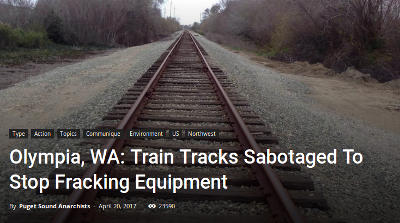 Our Underground Action Calendar lists attacks from as far back as the 1970s, to inspire and serve as a research tool. We include a variety of actions from around the world, some carried out by individuals, some by organized militant groups. Targets range from local earth-destroying construction equipment to networks of oil wells and pipelines. Browsing the list gives a good idea of what can be accomplished with simple acts of monkeywrenching or with persistent campaigns against industrial infrastructure.
Our Underground Action Calendar lists attacks from as far back as the 1970s, to inspire and serve as a research tool. We include a variety of actions from around the world, some carried out by individuals, some by organized militant groups. Targets range from local earth-destroying construction equipment to networks of oil wells and pipelines. Browsing the list gives a good idea of what can be accomplished with simple acts of monkeywrenching or with persistent campaigns against industrial infrastructure.
We’ve just refreshed the Calendar to make it even more inspirational to browse, and more useful as a research tool. We’ve cleaned out symbolic attacks and those based on a strategy of economic attrition, to focus instead on actions directly and concretely reducing the ability of the rich and powerful to destroy the earth. The descriptions of each attack are short and to the point so that you can quickly look through the list; each action links to a communique or news article with more information on the action if you want to research further.
You can filter by the attack target: for example, if you’re curious how railroad traffic has been disrupted in the past, select “Railway.” Or you can filter by the attack method: if you’re curious what kinds of infrastructure have been attacked with anything from air rifles to rocket launchers, select “Shooting.”
You can also filter by Country, sort by date, or search actions for keywords.
If you know of any attacks we’ve missed, especially current events (or historic attacks which expand the diversity of what we’re presenting), please email them to undergroundpromotion@deepgreenresistance.org
NOTE: We only accept communications about actions that are already publicly known in one form or another. Do not send original communiques directly to this email address. This is not a secure means of communication.